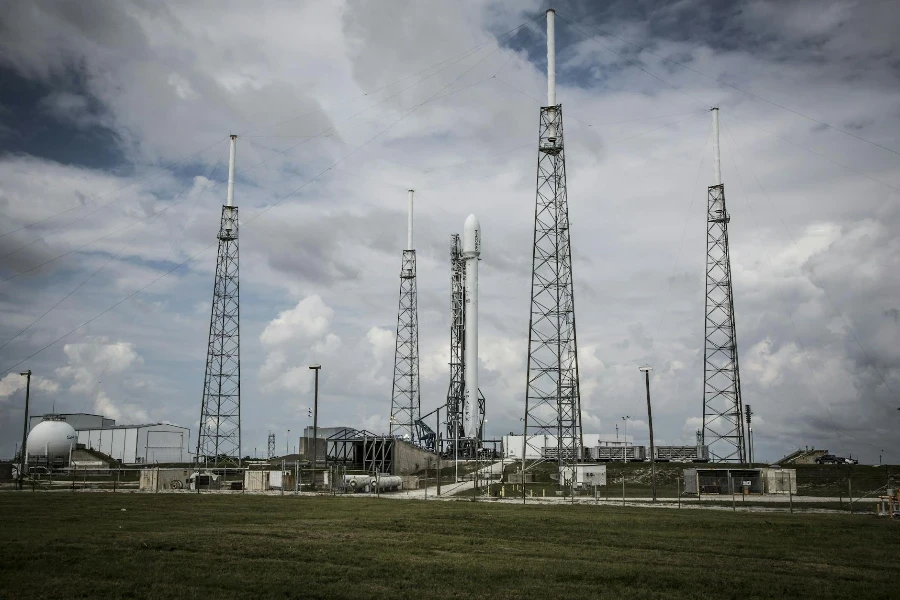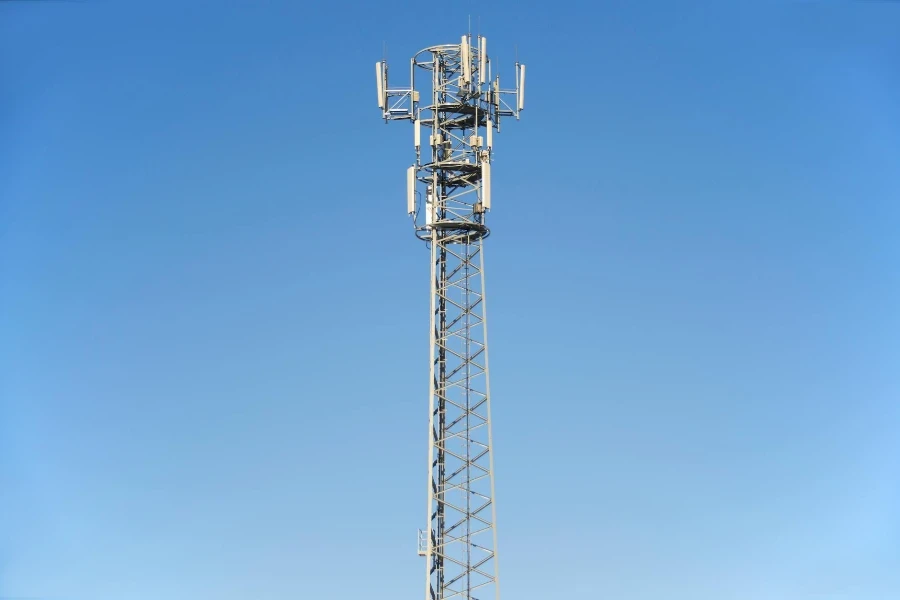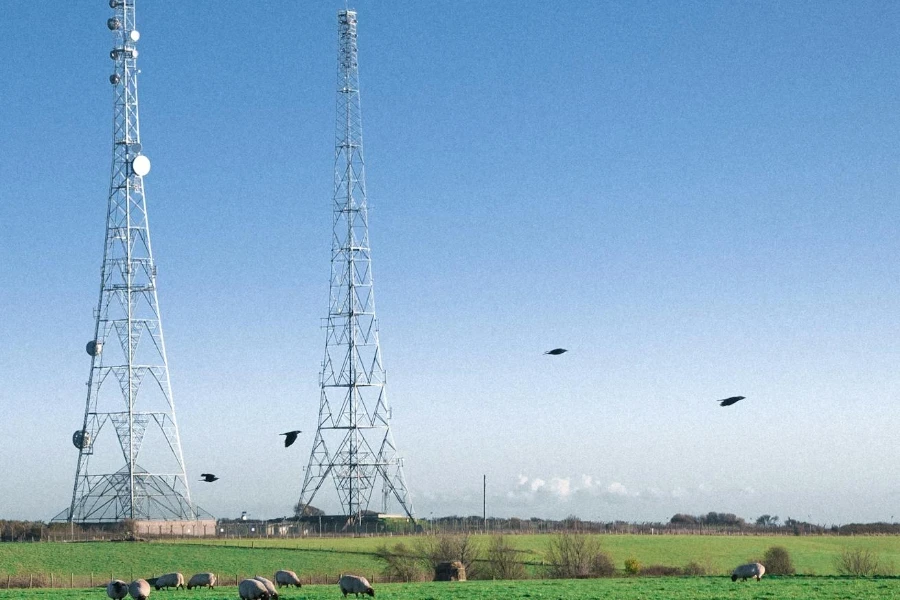In late 2024, advancements in mobile technology are rapidly transforming the cellular antenna booster industry. This article provides a comprehensive analysis of market trends, key factors to consider, and valuable insights for professional buyers. This guide will assist in making informed decisions to stock and sell the best products in 2025 and beyond.
Table of Contents:
– Market Overview: Cellular Antenna Booster Industry
– In-Depth Analysis of the Cellular Antenna Booster Market
– Key Factors to Consider When Selecting a Cellular Antenna Booster
– Enhancing Connectivity with Cellular Antenna Boosters
– Regulatory Compliance and Safety Standards
– Wrapping Up
Market Overview: Cellular Antenna Booster Industry

The cellular antenna booster market has experienced significant growth in recent years, driven by the increased demand for better signal quality and coverage. As of 2024, the global market value for cellular antenna boosters was estimated at USD 3.7 billion, with projections indicating it will reach approximately USD 6.5 billion by 2030, reflecting a compound annual growth rate (CAGR) of 9.8%. This growth is largely due to the widespread adoption of mobile devices and the expansion of telecommunication infrastructure, particularly in developing regions.
The North American market holds a significant share, accounting for around 35% of the global market. This is driven by the high penetration of advanced mobile technologies and the presence of major industry players. In contrast, the Asia-Pacific region is expected to witness the fastest growth, with a CAGR of 11.2%, due to rapid urbanization, increasing smartphone usage, and substantial investments in network infrastructure.
Key market segments include residential, commercial, and industrial applications. The residential segment dominates with a 45% share, driven by consumer demand for uninterrupted mobile connectivity. Commercial applications, encompassing office buildings, shopping malls, and public venues, account for 35%, while industrial applications, including manufacturing plants and warehouses, represent 20% of the market.
In-Depth Analysis of the Cellular Antenna Booster Market

Cellular antenna boosters, also known as signal boosters, enhance mobile signal strength by amplifying weak signals and retransmitting them within a designated area. These devices are crucial in areas with poor network coverage, ensuring reliable communication for both voice and data services. Key performance benchmarks include gain (measured in decibels), coverage area (measured in square feet), and supported frequency bands (e.g., 700 MHz, 850 MHz, 1900 MHz).
Leading players, such as Wilson Electronics, SureCall, and weBoost, collectively hold over 60% of the market. Their dominance is attributed to strong brand recognition, extensive distribution networks, and continuous product innovation. Economic influences, such as rising disposable incomes and increasing reliance on mobile internet, further propel market growth.
Consumer behavior shifts indicate a growing preference for DIY installation kits, reflecting a trend towards user-friendly and cost-effective solutions. Seasonal demand patterns show peaks during the holiday season and back-to-school periods, driven by increased consumer spending on electronics. Distribution channel preferences are evolving, with online sales channels gaining traction due to convenience and wider product selection.
Recent innovations in the market include the development of smart signal boosters equipped with artificial intelligence (AI) and machine learning (ML) capabilities. These advanced boosters can dynamically adjust amplification levels based on real-time network conditions, optimizing performance and energy efficiency. Product lifecycle stages range from introduction and growth to maturity and decline, with current market offerings primarily in the growth phase, characterized by rapid technological advancements and increasing adoption.
Digitalization and social trends, such as remote working and smart home integration, further drive demand for reliable mobile connectivity solutions. Environmental regulations are increasingly influencing product design, with manufacturers focusing on energy-efficient and eco-friendly components. Customer pain points, including high installation costs and compatibility issues, are being addressed through innovative design and comprehensive customer support.
Brand positioning strategies emphasize reliability, ease of installation, and superior performance. Differentiation strategies include offering extended warranties, customizable solutions, and value-added services such as installation assistance and technical support. Niche markets, such as rural areas and off-grid locations, present significant growth opportunities for specialized signal boosters designed to operate in challenging environments.
Overall, the cellular antenna booster market is poised for robust growth, driven by technological advancements, increasing consumer awareness, and expanding network infrastructures. Industry stakeholders should focus on continuous innovation, strategic partnerships, and customer-centric approaches to capitalize on emerging opportunities and maintain a competitive edge.
Key Factors to Consider When Selecting a Cellular Antenna Booster

When selecting a cellular antenna booster, several critical factors must be considered to ensure you choose the best device for your needs. These factors include types and styles, performance and functionality, technical specifications, ease of use, and price range. Below, we’ll delve into each of these key considerations to help you make an informed decision.
Types and Styles of Cellular Antenna Boosters
Cellular antenna boosters come in various types and styles, each designed for different needs and environments. The most common types include in-building boosters, vehicle boosters, and portable boosters.
In-building boosters enhance signal strength within homes, offices, or other indoor spaces. These boosters typically consist of an external antenna that captures the signal, an amplifier that boosts it, and an internal antenna that rebroadcasts the enhanced signal inside the building. They are ideal for areas with poor indoor reception due to thick walls or other obstructions.
Vehicle boosters are designed for use in cars, trucks, RVs, and other vehicles. They help maintain a strong cellular signal on the move, crucial for uninterrupted communication and navigation. These boosters generally include an external antenna mounted on the vehicle, an amplifier, and an internal antenna placed inside the vehicle.
Portable boosters are compact and easy to carry, making them perfect for travelers or individuals needing a temporary signal boost. They are versatile and can be used in various locations, such as hotel rooms, campsites, or remote areas.
Performance and Functionality
The performance and functionality of a cellular antenna booster are paramount. Key performance indicators include gain, coverage area, and supported frequency bands.
Gain, measured in decibels (dB), indicates the strength of the signal boost provided by the booster. Higher gain values generally translate to a stronger and more reliable signal. Coverage area refers to the maximum area that the booster can effectively cover, which is crucial for ensuring comprehensive signal enhancement in the desired location.
Supported frequency bands are also essential, as different cellular networks operate on various frequency bands. A good booster should support multiple bands to ensure compatibility with different carriers and technologies, such as 4G LTE and 5G.
Technical Specifications
Understanding the technical specifications of a cellular antenna booster is crucial for selecting the right device. Important specifications to consider include maximum gain, output power, and noise figure.
Maximum gain, as mentioned earlier, measures the signal boost provided by the amplifier. Output power, measured in milliwatts (mW) or decibels per milliwatt (dBm), indicates the strength of the signal transmitted by the internal antenna. Higher output power can help improve signal penetration through walls and other obstacles.
The noise figure measures the amount of noise introduced by the booster during signal amplification. A lower noise figure indicates better performance, as less noise means a clearer and more reliable signal.
Ease of Use
Ease of use is another critical factor to consider when selecting a cellular antenna booster. This includes the complexity of the initial setup, user interface, and maintenance requirements.
A good booster should come with clear instructions and be easy to install, even for individuals with limited technical knowledge. Some boosters feature plug-and-play designs, requiring minimal setup and configuration. Additionally, the user interface should be intuitive, allowing users to monitor and adjust settings easily.
Maintenance requirements should also be minimal, with the booster designed to operate reliably with little intervention. Some boosters come with automatic gain control, which adjusts the amplification level based on the incoming signal strength, ensuring optimal performance without manual adjustments.
Price Range and Budget
The price range of cellular antenna boosters can vary significantly, depending on the type, performance, and features. It’s essential to consider your budget and balance it with the desired performance and functionality.
Entry-level boosters typically offer basic signal enhancement and are suitable for small areas or light usage. These boosters are generally more affordable but may have limited coverage and gain.
Mid-range boosters provide a good balance between performance and cost, offering enhanced coverage, higher gain, and support for multiple frequency bands. They are suitable for larger homes, offices, or vehicles with moderate signal issues.
High-end boosters offer the best performance, with the highest gain, extensive coverage, and advanced features such as 5G compatibility and automatic gain control. These boosters are ideal for large buildings, remote areas, or users with significant signal challenges. While they come at a higher cost, the investment can be justified by the improved connectivity and reliability.
Enhancing Connectivity with Cellular Antenna Boosters

Cellular antenna boosters play a crucial role in enhancing connectivity in areas with weak or unreliable cellular signals. By understanding their functionality, installation process, and benefits, you can make the most of these devices to improve your communication experience.
How Cellular Antenna Boosters Work
Cellular antenna boosters work by capturing weak cellular signals, amplifying them, and rebroadcasting the enhanced signals to improve connectivity. The process involves several components, including an external antenna, an amplifier, and an internal antenna.
The external antenna is typically mounted outside the building or vehicle, where it can capture the strongest possible signal. This antenna is connected to the amplifier, which boosts the signal strength. The amplified signal is then transmitted to the internal antenna, which rebroadcasts it within the desired area, providing improved signal strength and coverage.
Installation Process
The installation process for cellular antenna boosters varies depending on the type and model. However, the general steps include selecting the optimal location for the external antenna, mounting the antenna, connecting the components, and configuring the booster.
Selecting the optimal location for the external antenna is crucial for capturing the strongest signal. This usually involves placing the antenna on the roof or an elevated position with a clear line of sight to the nearest cell tower. Once the location is determined, the antenna is mounted securely, and cables are run to the amplifier.
The amplifier is typically installed indoors, where it can be easily accessed for monitoring and adjustments. The internal antenna is then placed in a central location to ensure even distribution of the boosted signal. Finally, the booster is powered on, and any necessary configurations are made to optimize performance.
Benefits of Using Cellular Antenna Boosters
The primary benefit of using cellular antenna boosters is improved signal strength and coverage. This leads to more reliable voice calls, faster data speeds, and reduced call dropouts, enhancing overall communication quality.
Boosters are particularly beneficial in areas with poor indoor reception, such as buildings with thick walls, basements, or remote locations far from cell towers. They can also improve connectivity while on the move, ensuring uninterrupted communication in vehicles.
Additionally, cellular antenna boosters can extend the battery life of mobile devices. When the signal is weak, devices work harder to maintain a connection, draining the battery faster. By boosting the signal, boosters reduce the power required for communication, resulting in longer battery life.
Regulatory Compliance and Safety Standards

When selecting and installing a cellular antenna booster, it’s essential to ensure compliance with regulatory standards and safety guidelines. This includes understanding the regulations set by authorities and adhering to best practices for safe installation and operation.
Regulatory Standards
Cellular antenna boosters must comply with regulations set by telecommunications authorities, such as the Federal Communications Commission (FCC) in the United States. These regulations ensure that boosters do not cause interference with cellular networks and operate within safe limits.
Manufacturers must obtain certification for their boosters, demonstrating compliance with these regulations. When purchasing a booster, look for products certified by relevant authorities to ensure they meet the required standards.
Safety Guidelines
Safety guidelines for installing and operating cellular antenna boosters include proper placement of antennas, secure mounting, and safe handling of cables and equipment. The external antenna should be mounted securely to withstand weather conditions and prevent accidents. Additionally, cables should be routed safely to avoid tripping hazards and damage.
It’s also important to follow the manufacturer’s instructions for installation and operation. This includes using the provided components and accessories, avoiding modifications, and ensuring proper grounding to prevent electrical hazards.
Environmental Considerations
Environmental considerations include ensuring that the booster does not cause interference with other electronic devices and minimizing its impact on the environment. Proper placement of antennas and adherence to regulatory guidelines can help prevent interference with other wireless devices and networks.
Additionally, consider the environmental impact of the booster, such as energy consumption and disposal. Choose energy-efficient models and follow proper disposal practices for electronic waste to minimize environmental impact.
Wrapping Up
In summary, selecting the right cellular antenna booster involves considering various factors, including types and styles, performance and functionality, technical specifications, ease of use, and price range. By understanding these factors and following best practices for installation, you can enhance your connectivity and enjoy reliable communication in areas with weak or unreliable signals.




